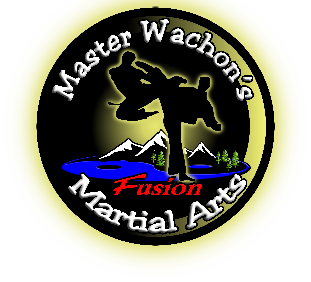





The translated version of "A Modern History of Taekwondo"
written by KANG Won Sik and LEE Kyong Myong, in the Korean language.
Chapter 1: The Development of the Kwans
Chapter 1, Section 1: Chung Do Kwan
Right after the independence of Korea, the Chung Do Kwan, one of the five key Dojangs, was founded first. It symbolized Chung Do Kwan's name, Bluewaves, meaning a youngster's spirit and vitality. Chung Do Kwan's founder, LEE Won Kuk, moved to Japan when he was 19 years.old in 1926. While in Japan, he first attended middle and high school, and.then entered the law school of Chuo University. Then he entered Japan's Karate headquarters, the Song Do Kwan (Shotokan). He received Karate instruction from Karate's father, Funakoshi Sensei. There, he learned Karate with Song Moo Kwan's founder, RO Byung Jick. He moved back to Japan and taught Tang Soo Do in the Yong Shin school hall in Suh Dae Moon Gu's Ochun Dong, Seoul because he had a good relationship with Japan's Chosun Governor General Abe in 1944. This led to the rumor that he was pro-
Chapter 1, Section 2: Choson Yun Moo Kwan Kong Soo Do Bu (Jidokwan)
The Jidokwan was founded by an elite member, CHUN Sang Sup, on May 3, 1946 as the Choson Yun Moo Kwan Kong Soo Do Bu. When he was a teenager, he learned Judo and learned Karate while studying abroad in Japan. After the Independence Day, he opened the Choson Yun Moo Kwan Kong Soo Do Bu at the former Judo school, Choson Yun Moo Kwan, where he taught Judo and Karate. He began to recruit new members. He had a slender figure and was not particular, but was an intellect and always wore suits. However, during the Korean War, he vanished, the Choson Yun Moo Kwan Kong Soo Do Bu was abolished and it was renamed Jidokwan. After Independence Day, the Choson Yun Moo Kwan taught no guep (mu guep) to 8th guep in high, middle and low classes. The student's Kwan number was based on guep promotion, and not only the day of the first registration as a student. The Choson Yun Moo Kwan was started in Seoul, but the major development and structural growth was spread from Chun Ju, Cholla Buk Do as a center. Then, CHUN Il Sup opened another school in Kunsan, Cholla Buk Do in May 1947, and spread his school's reputation from Jun Joo to Kunsan, I Ri, Nam Won, Jung Uep and more. During the Korean War, the Choson Yun Moo Kwan's name was changed to Jidokwan. After CHUN Sang Sup was kidnapped to North Korea, the Jidokwan (Wisdom Way School) was opened and ran by YOON Kwe Byung and LEE Chong Woo until 1967. However, through the process of unification with the Korea Tae Soo Do Association, the Jidokwan had conflicts between YOON Kwe Byung and LEE Chong Woo. Led by LEE Chong Woo (Jidokwan), LEE Nam Suk (Chang Moo Kwan), UHM Woon Kyu (Chung Do Kwan), HYUN Jong Myun (Chung Do Kwan/Oh Do Kwan) and others planned to unify, but YOON Kwe Byung and HWANG Kee (Moo Duk Kwan) declined and persisted on their self testing committee. Jidokwan graduates were 1) BAE Young Ki; 2) LEE Chong Woo; 3) KIM Bok Nam; 4) PARK Hyun Jung; 5) LEE Soo Jin; 6) JUNG Jin Young; 7) LEE Kyo Yoon; 8) LEE Byung Ro; 9) HONG Chang Jin; 10) PARK Young Kuen and others. Jidokwan's distinguished difference from other schools was mainly based on Kyorugi (sparring). When Taekwondo tournaments became active from the beginning of the 1960's to the 1970's, Jidokwan distinguished itself. The major representatives were LEE Seung Wan, CHO Jum Sun, HWANG Dae Jin, CHOI Young Ryul and more. Jidokwan's representing annex was the Han Moo Kwan. But, LEE Kyo Yoon said the Han Moo Kwan root is not Jidokwan, but rather the Choson Yun Moo Kwan. This shows the debate of the origins of the school. Jidokwan's first Kwan Jang was CHUN Sang Sup; the second Kwan Jang was YOON Kwe Byung and the third LEE Chong Woo.
Chapter 1, Section 3: Moo Duk Kwan
After Independence Day, the Moo Duk Kwan started as the "Transportation by Rail Committee Tang Soo Do Bu" at the railroad system at Yong San Station, Seoul. The Department of Transportation allowed the Tang Soo Do Dojang as a traffic service, but the exact date is unknown. We only know that it was founded after 1946. HWANG Kee claimed that he learned Kuk Sool when he worked for the Southern Manchuria Railroad in 1935, but other Taekwondo seniors denied this claim saying that there was no evidence. Moo Duk Kwan was nearby the Yong San Railroad station, so it was called the "Railroad Dojang". The first Moo Duk Kwan dan holder was KIM Woon Chang. Others were: 1) HONG Chong Soo; 2) CHOI Hui Suk; 3) YOO Kwa Young; 4) NAM Sam Hyun; 5) KIM In Suk; 6) LEE Bok Sung; 7) HWANG Jin Tae; 8) WON Yong Bup; 9) CHUNG Chang Young; 10) LEE Kang Ik, and others who were all railroad personnel. The Moo Duk Kwan used the trains to open a school in different railroad station's storage rooms and spread its power. When someone said Moo Duk Kwan, one would think about the railroad. When the Moo Duk Kwan had rank testings, the Chung Do Kwan's LEE Won Kuk and Song Moo Kwan's RO Byung Jick visited and built a good friendship, but regarding dan certificates and promotions, they had disagreements with HWANG Kee. In 1955, the Moo Duk Kwan Central Gymnasium was opened near Seoul Station in Joong Gu's Dong Ja Dong, Seoul. In the same year, 9 more annex schools were opened and it held the friendly China-
Click PDF Icon below to continue reading:


